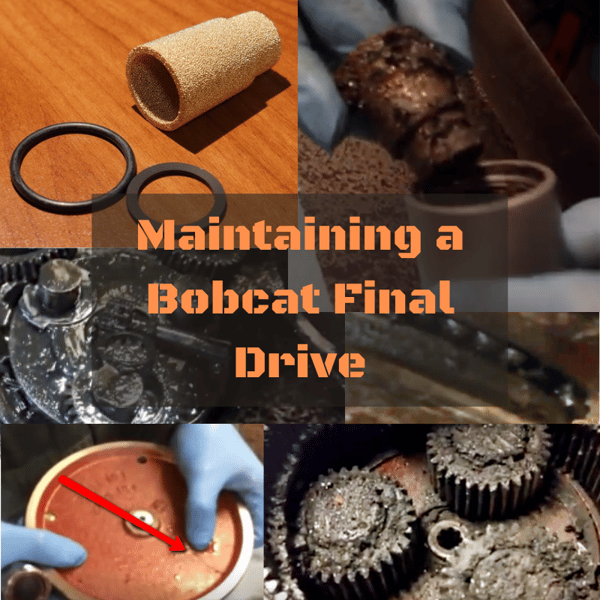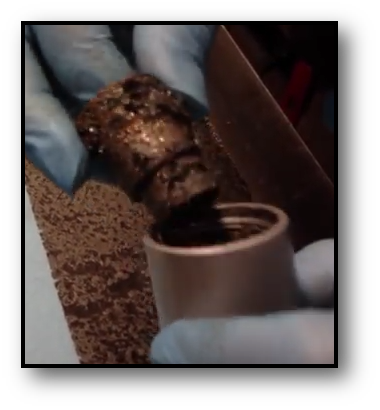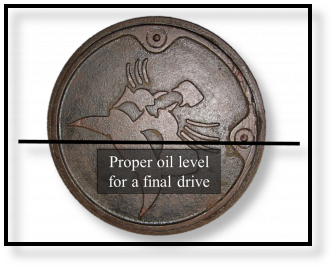The number one cause of failure for a Bobcat final drive is lack of maintenance. In this Shop Talk Blog post, we’ll review the most important things you need to do to maintain the final drive on your Bobcat CTL, SSL, or mini-excavator.

Here are a few other Shop Talk Blog posts you might find helpful:
Bobcat got its start when a turkey farmer needed a compact machine that could manipulate well in extremely tight spaces. The skid steer was born and the brand was first Keller, then Monroe, and finally in the 1960s it received the name we all know so well: Bobcat, “One tough animal.” Today, Bobcat remains one of the leading manufacturers of skid steers and compact track loaders.
Case Drain Filters
One of the most common causes of failure for Bobcat final drive motors can be traced back to the case drain filter. The case drain is a low-pressure line that returns hydraulic fluid resulting from internal leakage back to the hydraulic reservoir. On most Bobcat SSLs, this line will have an inline filter that needs to be replaced when the other hydraulic filters are replaced. Failure to do so will lead to a clogged case drain line that can lead to irreparable damage to a final drive motor. If your filter looks like the one below, you are long overdue for a change.

Bobcat Final Drive Gear Hub Maintenance
There are two major maintenance tasks (besides replacing the case drain filter) that you need to perform on your Bobcat final drive: checking and changing the gear oil.
Bobcat Final Drive Gear Oil Level Check
Before starting, make sure you’ve cleaned out all the debris from around the plugs so none of it falls into the gear hub. As far as tools go, you need the right size socket to unscrew the drain plugs and possibly a hammer to loosen them. You’ll also need the right kind of gear oil for your machine in case the levels need to be topped off.

Here’s how to check the gear oil levels:
- On your Bobcat final drive, you should two or possibly 3 plugs on the faceplate. Rotate your drive so that one plug is at the 12 o’clock position (straight up) and the other is either at the 3 o’clock position or the 9 o’clock position.
- Remove both plugs for venting purposes.
- If the drive has enough gear oil, the oil will be level with the 3 o’clock (or 9 o’clock) opening and just a little gear oil should drain out.
- If the gear oil level is low, then you need to add additional oil through the 12 o’clock opening until it begins to run out at the 3 o’clock (or 9 o’clock) opening.
- Once you have finished topping off the gear oil, replace both of the plugs.
If you notice the levels are consistently low, even after topping the gear oil off, that points to a leaking seal that needs to be replaced sooner rather than later.
You should check the gear oil levels about every 100 working hours
Bobcat Final Drive Gear Oil Change
Again, clean out all the debris from around the plugs. In addition to the tools you need to check the gear oil levels, you’ll also need something to catch the old gear oil in so it can be disposed of appropriately. Make sure you have the right kind of oil!
We recommend making sure the gear oil is warm -- warm oil is easier to drain than cold.
- Position your final drive so the plugs are in the 3 o’clock (or 9 o’clock) and the 6 o’clock position (straight down).
- Remove the bottom plug first, then slowly remove the top plug. The 3 o’clock (or 9 o’clock) opening is for venting while the 6 o’clock opening is for letting the oil drain out.
- As the oil drains, take notice of whether there are metallic slivers present in the oil or stuck to the plugs -- glittery or sparkly looking oil means you need your final drive serviced ASAP.
- When you are ready to add the fresh oil, reposition the final drive so that the openings are in the 12 o’clock (straight up) and 3 o’clock (or 9 o’clock) position.
- Pour the fresh gear oil in the 12 o’clock opening until it begins to run out the other opening.
- Once you’ve finished adding the oil, replace the plugs.
Gear oil should be changed at least once a year.
Conclusion
Here at Texas Final Drive, we’ve noticed that the vast majority of Bobcat final drives fail long before they should for one of three reasons: the case drain filter clogged, the gear oil levels dropped too low, or the gear oil wasn’t changed often enough. Just taking care of these three maintenance tasks will help your final drive motor last as it should.


